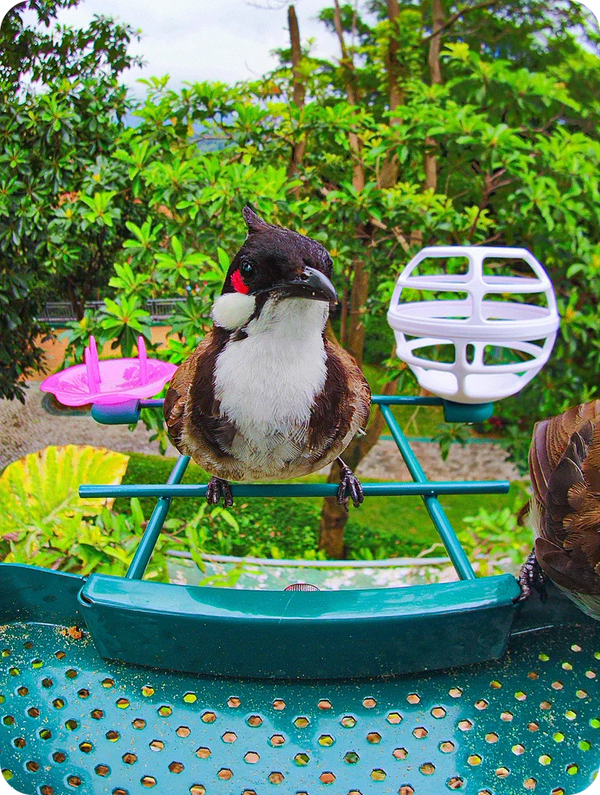Unlock the Secret to Attracting More Birds with This Must-Have Suet Holder!
Creating a vibrant and lively backyard is a joy for many nature enthusiasts, and one of the best ways to invite feathered friends into your space is by using a suet holder. Suet, a high-energy food, is particularly attractive to a variety of birds, especially during the colder months when natural food sources become scarce. By providing suet, you not only support the local bird population but also create an engaging environment for birdwatchers. Imagine sitting in your garden, observing the flutter of wings and the vibrant colors of birds as they feast on the suet you’ve provided. It's a delightful experience that can transform any yard into a lively sanctuary.

Understanding Suet and Its Benefits
Suet is a type of animal fat, usually rendered from beef or mutton, that serves as an excellent energy source for birds. It’s particularly beneficial for backyard birds like woodpeckers, nuthatches, and chickadees, which thrive on high-fat foods, especially during winter when their natural food sources are limited. The high nutritional value of suet helps birds maintain their energy levels, allowing them to stay warm and healthy in harsh weather. Moreover, suet can be mixed with seeds, fruits, or nuts, making it a versatile food option that attracts a diverse range of bird species. Not only does feeding birds suet provide essential nutrients, but it also offers birdwatchers a chance to observe their favorite species up close, fostering a deeper connection with nature.
Types of Suet Holders
When it comes to suet holders, there’s a myriad of options available to suit different preferences and environments. Wire cages are among the most popular types, allowing birds to cling to the sides while pecking at the suet within. These holders are particularly effective for attracting woodpeckers and other clinging birds. Platform feeders, on the other hand, provide a flat surface where suet can be placed, making it accessible for ground-feeding birds like sparrows. There are also specialized suet feeders designed with unique features, such as built-in seed compartments or suet cakes that come with enticing blends of fruits and nuts. Each type of suet holder has its own advantages, and the choice depends on the bird species you wish to attract and your specific backyard setup.
Choosing the Right Suet Holder for Your Needs
When selecting a suet holder, consider the location in your yard and the species of birds you want to attract. For instance, if you live in an area with a lot of woodpeckers, a wire cage suet holder mounted on a tree trunk would be ideal. On the other hand, if you’re looking to attract a variety of birds, placing a platform feeder in a sheltered spot can draw in multiple species. Ease of use is also a critical factor; choose a holder that allows for quick and straightforward refilling and cleaning. It’s essential to consider the placement as well. Position the suet holder in a place that’s visible from your home for optimal birdwatching, yet far enough from areas where predators might lurk.
Tips for Using Suet Holders Effectively
To get the most out of your suet holder, proper maintenance and placement are key. Start by filling the holder with high-quality suet, ensuring it’s fresh and suitable for the season. Regularly clean the feeder to prevent mold and bacteria buildup, which can harm birds. A good practice is to wash the holder with soapy water and rinse it thoroughly every few weeks. Refilling frequency will depend on bird activity; during peak feeding times, you may need to refill every few days. It's also beneficial to hang your suet holder in a shady area during hot months to prevent the fat from melting too quickly. Additionally, observing the feeding patterns of birds can help you adjust the placement and type of suet you offer to maximize visits.
Common Mistakes to Avoid
When using suet holders, there are a few common mistakes that can hinder your birdfeeding success. One of the most frequent errors is using low-quality or expired suet, which not only fails to attract birds but could also pose health risks to them. Another mistake is placing the holder in an overly exposed area where it might be easily accessed by predators such as cats or hawks. Additionally, neglecting to clean the feeder regularly can lead to moldy food, deterring birds from visiting. Lastly, not considering the seasonal changes in bird feeding habits can result in an empty feeder. By avoiding these pitfalls, you can ensure a more fruitful birdwatching experience.
Enhancing Your Backyard Birdwatching Experience
In conclusion, a suet holder is an invaluable addition to any backyard, offering a straightforward way to attract a variety of birds while enhancing your birdwatching experience. Understanding the benefits of suet, exploring different types of holders, and implementing effective feeding strategies can make a significant difference in the number of birds visiting your yard. By choosing the right suet holder and maintaining it properly, you create an inviting space for birds, bringing the joy of nature right to your doorstep. So, gear up, select the perfect suet holder, and get ready to enjoy the beautiful spectacle of birds flocking to your feeders!








